"Robbing" golden time
Recently, while working on a fishing boat exploiting and catching seafood in the waters of Truong Sa archipelago ( Khanh Hoa ), Mr. Vo Van Sy (54 years old, living in Quang Ngai province) suddenly had a headache and weakness in the left side of his body.
After being admitted to Nam Yet Island Infirmary, he was diagnosed by doctors with an acute stroke at the 56th hour, uncontrolled hypertension, and acute cerebral edema. The patient's condition exceeded the medical expertise of Nam Yet Island Infirmary, so he was transferred to Military Hospital 175 by air for timely emergency care.
 |
Transporting patients by helicopter from Truong Sa to the mainland for treatment |
In early February 2023, a 9-month-old girl (living in Phu Quoc island district, Kien Giang province) was diagnosed with acute myocarditis. The family hired a helicopter to transport the patient to the mainland. Upon receiving the notification, an ambulance from Children's Hospital 1 (HCMC) was present when the plane landed and transferred the patient to the hospital. Fortunately, the patient was given timely emergency care and has overcome the critical stage.
Previously, a family in Con Dao district, Ba Ria - Vung Tau province, whose child suffered a traffic accident that resulted in a traumatic brain injury, hired a helicopter to transport him to the mainland. After the plane landed in Vung Tau, the patient was taken to Cho Ray Hospital for emergency treatment. Here, the patient was saved by the skin of his teeth thanks to timely craniotomy to remove the hematoma. It is known that the cost of hiring a helicopter to transport him to the mainland for emergency treatment was 100 million VND.
According to Lieutenant Colonel - Doctor Vu Dinh An, Deputy Head of the Emergency Resuscitation Department, Military Hospital 175, since 2012, Military Hospital 175 has conducted the first emergency flights across the sea, bringing officers, soldiers and fishermen from Truong Sa to the mainland for emergency treatment when there are health problems.
In 2016, the hospital established an Air Rescue Team, and from here, air rescue activities were organized in a systematic and regular manner. To date, the Air Rescue Team has conducted nearly 100 air rescue flights, and 100% of patients were successfully rescued.
“The biggest benefit of air ambulance transport is that it helps to “steal” the golden time in emergency care and treatment of patients. Most of the patients ordered to be transferred to the mainland are seriously ill, and if not treated promptly, their lives may not be saved. In particular, since the end of 2020, Military Hospital 175 has put into operation a helipad, which has significantly shortened the time to transport patients,” said Lieutenant Colonel - Doctor Vu Dinh An.
Great demand but difficult to implement
According to Lieutenant Colonel - Doctor Vu Dinh An, previously, the ambulance helicopter had to land at Tan Son Nhat airport, then the patient was transported by road to Military Hospital 175, which took a lot of time because the distance from the airport to the hospital was often congested. Since the hospital's helicopter landing pad was put into operation, the time for each ambulance flight has been shortened by 15-30 minutes, taking advantage of the golden time to rescue patients.
Lieutenant Colonel - Doctor Vu Dinh An said that the demand for air ambulance transport is increasing and this type of transport brings great benefits, but has not been widely replicated. Therefore, the relevant agencies need to pay more attention to expanding and developing air ambulance transport in the future to increase access to emergency medical services for people in remote areas who unfortunately have health problems.
Affirming that air emergency is very urgent for critical medical cases that can be treated intensively within a certain period of time, Associate Professor, Doctor, Doctor Tang Chi Thuong, Director of the Ho Chi Minh City Department of Health, said that this is the dream of every doctor participating in emergency work outside the hospital, emergency specialists and the entire health sector, especially for emergency cases of multiple trauma after accidents, strokes, obstetric emergencies... occurring in remote areas and islands.
However, in reality, air ambulance transport is very difficult to implement in countries with difficult economies because of the very high operating costs, not to mention the strict requirements on air vehicles (including crew) and air traffic infrastructure, and on coordination regulations between air transport service providers and emergency services outside hospitals and in hospitals.
 |
Transporting patients from Truong Sa to the mainland by helicopter |
“Even in countries with developed health systems, air ambulance transport is not widely used due to the high cost of this service. Recently, in some developed countries in the region, the transport of donor organs to hospitals for transplant to recipients is also considered to be added to the list of air ambulances,” Associate Professor, Doctor, Doctor Tang Chi Thuong informed.
To effectively carry out air ambulance transport, according to Associate Professor, Doctor, Doctor Tang Chi Thuong, there needs to be synchronous development of infrastructure, especially airports and parking lots. In Ho Chi Minh City, previously, serious and complicated cases were air ambulanced from the island to Tan Son Nhat airport, then the patient was transferred to the hospital by ambulance.
With this method, hospitals receiving patients do not need to invest in infrastructure, but it will take longer, more or less affecting the treatment results. Therefore, the ideal is to receive patients right on the helipad within the hospital campus, then the time to transfer patients to the hospital is shortened. This is a decisive factor in the treatment results, especially for diseases that need intervention during the golden time.
* Prof. Dr. NGUYEN GIA BINH , President of Vietnam Association of Emergency Resuscitation and Poison Control:
Need to improve emergency system
Air transport and emergency medical care in our country have made progress in recent times but still have many limitations. However, this model is unlikely to be suitable for Vietnam for many reasons, including infrastructure, equipment and costs. Along with that, there is a lack of specialized resources, medical equipment; regulations and procedures on flight zones, national security and defense...
Therefore, it is necessary to perfect and unify this emergency system to provide emergency care for emergencies such as organ transplants; people in remote areas, islands with serious illnesses, accidents due to natural disasters, storms and floods that are inaccessible by road transport.
* Associate Professor, Doctor, Doctor TANG CHI THUONG, Director of Ho Chi Minh City Department of Health:
Not every hospital needs a helipad.
It is necessary to consider the cost-effectiveness when investing in helipads on the roofs of hospital buildings; it is not necessary for every leading hospital to have a helipad because Ho Chi Minh City already has an Emergency Center responsible for transporting seriously ill patients between hospitals, as well as the coordination process between hospital specialties according to the red alert process has been effective. The planning for the development of helipads in hospitals also needs to be considered in the future.
In Ho Chi Minh City, currently only Military Hospital 175 is licensed to use a helipad. The feasibility of air ambulance operations in Ho Chi Minh City is already there, the remaining issue is how to develop and operate this system effectively.
THANH AN - NGUYEN QUOC recorded
Need to remove obstacles soon
According to the Ho Chi Minh City Department of Health, new billion-dollar projects built in Ho Chi Minh City such as the City Children's Hospital, Oncology Hospital 2, and People's Hospital 115 already have helipads.
This is a preparation step to anticipate the emergency needs of patients, especially in cases requiring urgent emergency care, far from medical facilities such as in island areas or places where accidents or natural disasters occur.
Currently, the licensing of flights is facing problems, causing many hospitals to not be able to use helicopter landing pads for emergency purposes.
Dr. Pham Xuan Dung, Director of Ho Chi Minh City Oncology Hospital, said that the hospital is now ready for the landing site, but to put it into operation, many procedures, appraisals, licensing, investment are needed...
For cancer patients, there is less need for emergency transfers, but having an airport in a hospital is also important if it is used as a transit point for emergency transfers of other diseases to hospitals in the city.
According to Dr. Phan Van Bau, Director of People's Hospital 115, the assessment has been completed, and the flight location and licensing are managed by the Ministry of National Defense. The unit is promoting the completion of necessary procedures, ensuring strictness to have the earliest emergency flights.
Source


![[Photo] Ho Chi Minh City holds funeral for former President Tran Duc Luong](https://vphoto.vietnam.vn/thumb/1200x675/vietnam/resource/IMAGE/2025/5/24/9c1858ebd3d04170b6cef2e6bcb2019e)




![[Photo] Party and State leaders visit former President Tran Duc Luong](https://vphoto.vietnam.vn/thumb/1200x675/vietnam/resource/IMAGE/2025/5/24/960db9b19102400e8df68d5a6caadcf6)


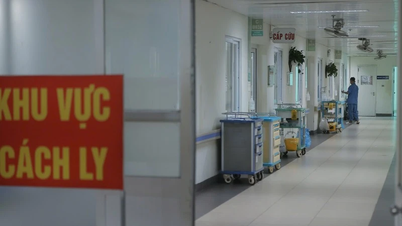

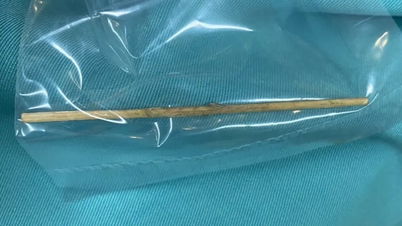







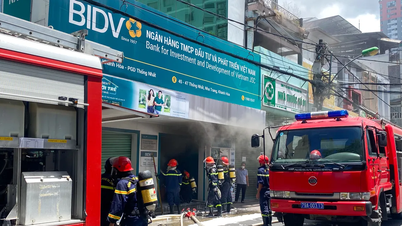
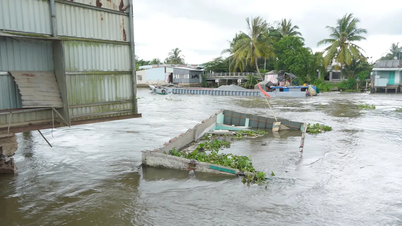
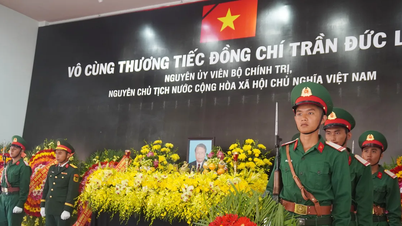
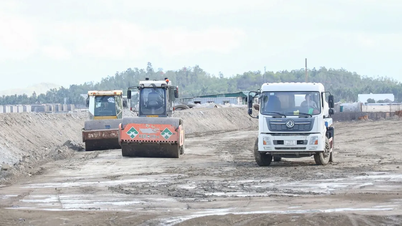







































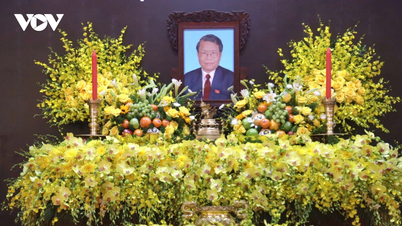
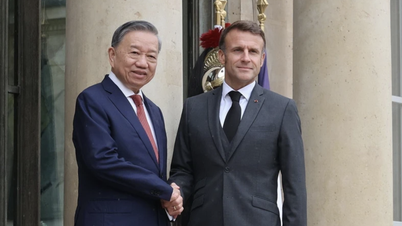
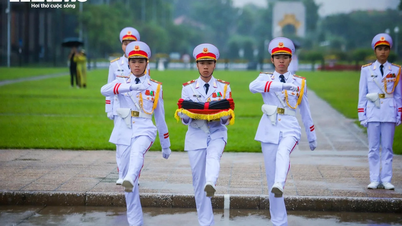










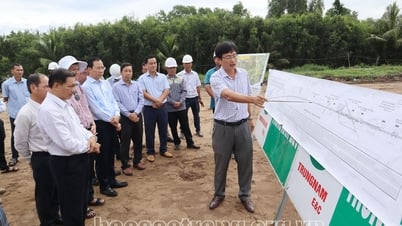


















Comment (0)